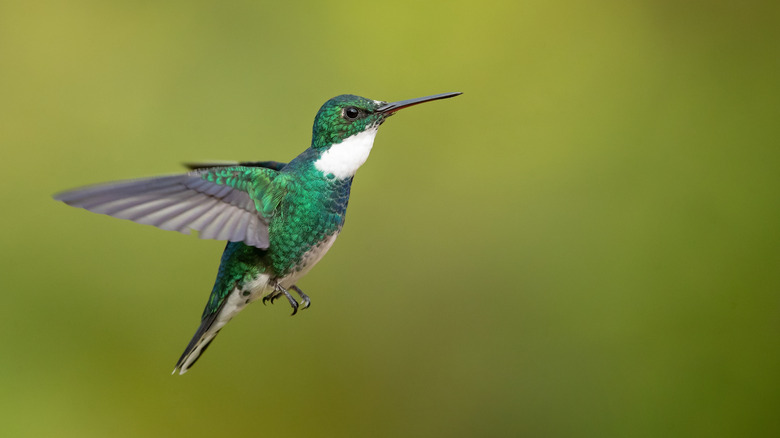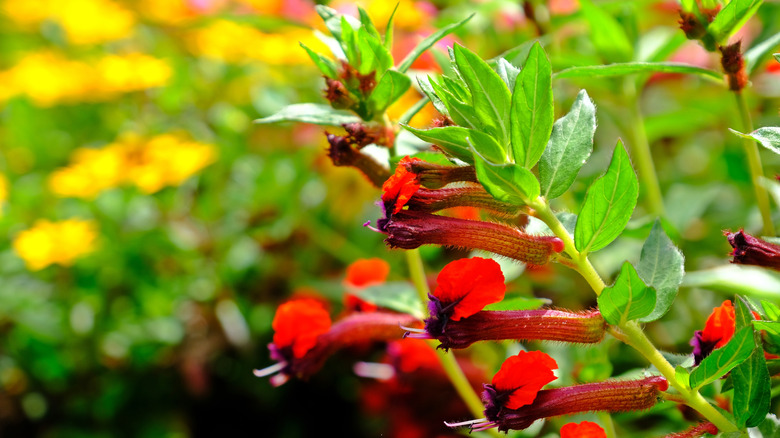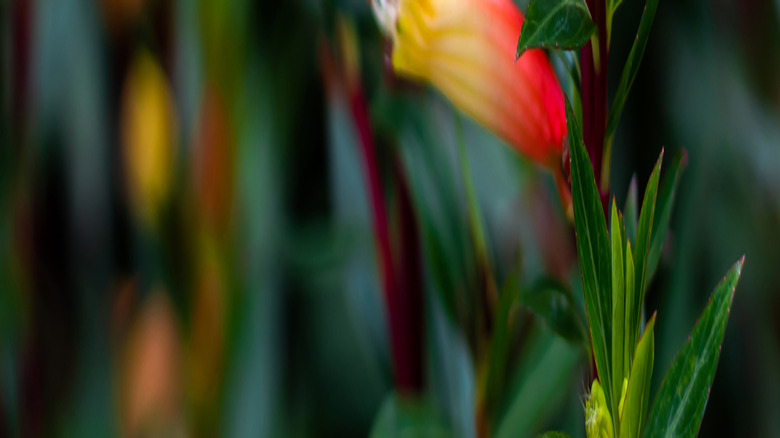Add Color To The Garden While Attracting Hummingbirds With A Flowering Ground Cover
If you are looking to attract hummingbirds into your yard with a low-maintenance, colorful flower, cuphea may be perfect for you. With about 240 species of this flowering shrub to pick from, cuphea comes in hues of pink, orange, yellow, red, and purple. You can get annual and perennial varieties of cuphea, with their spreading, dense stems making them perfect for ground cover.
Hummingbirds love bright, tubular flowers, and many species of cuphea tick the box. If you want to bring some bright red blooms into your yard, consider bat-faced cuphea (Cuphea llavea). Hardy to USDA Hardiness Zones 9 to 12, these flowers can be grown as annuals and perennials, depending on your climate. Bat-faced cuphea blooms from early spring to the frost, filling your garden with the sound of bird song throughout the seasons.
If you are looking for a more subtle color to add to your yard, you may want to grow the pink cigar plant (Cuphea cyanea). With its delicate pink flowers tipped with yellow, the pink cigar plant brings a more whimsical look to your garden. For a sunset-esque bloom, opt for the intriguing candy corn (Cuphea micropetala) variety. Its orange and yellow ombre petals are a beautiful addition to any yard, and can be grown as a perennial in USDA Hardiness Zones 8 to 11.
Using cuphea as part of a pollinator garden
When using cuphea as part of a pollinator garden, it is best to pick a brightly colored variety. Hummingbirds love flowers in shades of pink, red, and orange, so bear this in mind when selecting your cuphea.
Once you have figured out which cuphea plant you are going to get, reflect on the flowers that are already in your garden that attract hummingbirds. If possible, it is helpful to spread out your pollinator plants. Although small, hummingbirds can be pretty feisty and combative when it comes to resources! Having flowers in different locations will allow more birds to visit your yard. It is also useful to grow flowers in a range of heights for the hummingbirds.
Many varieties of cuphea, such as the bat-faced cuphea, do well in hanging baskets, so consider this as a way to bring different levels into your yard. If possible, plant more than one cuphea plant to boost the nectar levels, as this is what the hummingbirds drink.
How to grow cuphea
Most varieties of cuphea can be grown as annual ground cover in beds or containers. Growing them in containers does give you the option to move them indoors in the winter months if your climate is too cold for them to survive. They will need full sun to partial shade, but be careful about hot, direct sunlight if you live somewhere warm. These plants thrive in organically rich, well-draining soil, so you may want to check the health of your soil before planting them out to ensure it is suitable.
If you are planting cuphea as ground cover, consider the size of the variety you have and give it enough space to grow to maturity. For example, if you are planting the Mexican cigar plant (Cuphea ignea) variety, you will need to give it 3 feet of space to reach its maximum spread. Plant your cuphea in a staggered row pattern, as this will create a cover quickly.
Once your cupheas are planted, ensure that you are staying on top of watering. Some varieties can be quite drought tolerant, but it is best to keep them moist throughout the season. If you are growing your flowers in hanging baskets or containers, fertilize them a few times in the summertime to help them continue to bloom. Apart from watering and the occasional feed, these dazzling blooms are pretty low-maintenance! Cupheas are self-cleaning flowers that don't need deadheading, but you may wish to trim back the stems if they are looking a bit leggy.


